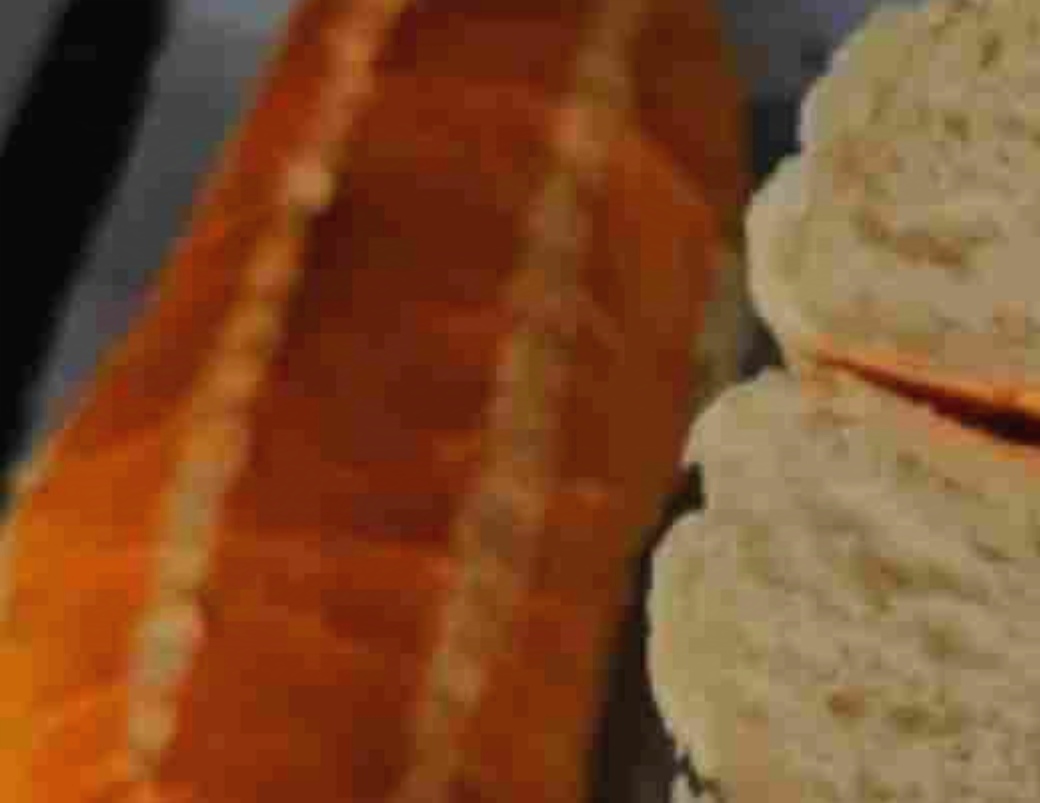This Homemade Bread Recipe yields a delicious loaf with a crisp, golden crust and a soft, airy interior. Perfect for sandwiches, toast, or simply enjoyed with a pat of butter, this bread is a staple that you can easily make in your own kitchen. The combination of simple ingredients and a bit of patience results in a delightful homemade loaf that’s sure to impress.
Preparation Time: 10 minutes | Rising Time: 1 hour | Baking Time: 30-35 minutes | Total Time: 1 hour 45 minutes
Ingredients:
- Water: 500 ml (2 cups)
- Flour: 650-700 grams (4 1/2 to 5 1/2 cups)
- Salt: 1 teaspoon
- Dry Yeast: 10 grams (1 packet)
- 3 tablespoons
- Sugar: 1 teaspoon (for topping)
Directions:
- Prepare the Dough:
- In a large mixing bowl, combine the flour, salt, and dry yeast.
- Gradually add the water to the flour mixture, mixing until a dough forms.
- Knead the dough for about 10 minutes, or until it becomes smooth and elastic.
- Incorporate:
- Add the olive oil to the dough and continue to knead until the oil is fully incorporated.
- Let the Dough Rise:
- Cover the dough with a clean cloth and let it rise in a warm place for about 1 hour, or until it has doubled in size.
- Shape and Bake:
- Preheat your oven to 220°C (428°F).
- Once the dough has risen, shape it into your desired bread form and place it on a baking sheet lined with parchment paper.
- Sprinkle the top of the dough with sugar.
- Bake in the for about 30-35 minutes, or until the bread is golden brown and sounds hollow when tapped on the bottom.
- Cool and Serve:
- Remove the bread from the oven and let it cool on a wire rack before slicing and serving.
Serving Suggestions:
- Breakfast: Enjoy toasted with butter or jam.
- Lunch: Use for sandwiches with your favorite fillings.
- Dinner: Serve alongside soups, salads, or pasta dishes.
Cooking Tips:
- Kneading: Ensure the dough is kneaded well to develop the gluten, which helps the bread rise properly.
- Rising: The dough should be placed in a warm, draft-free area to rise effectively.
Nutritional Benefits:
- Carbohydrates: Provides a good source of energy.
- Versatile: Can be used in various meals throughout the day.
Dietary Information:
- Vegetarian: This recipe is suitable for vegetarians.
Nutritional Facts (per slice):
- Calories: Approximately 100 kcal
- Carbohydrates: 20 grams
- Fats: 2 grams
- Protein: 3 grams
- Fiber: 1 gram
Storage:
- Room Temperature: Store in an at room temperature for up to 3 days.
- Freezing: Freeze slices or whole loaves in a freezer bag for up to 2 months. Thaw at room temperature or toast before serving.
Why You’ll Love This Recipe:
This Homemade Bread Recipe delivers a perfect loaf with minimal effort. It’s versatile, allowing you to enjoy it in numerous ways, from simple toast to hearty sandwiches. The combination of a crisp crust and soft interior makes it a comforting and satisfying choice. Baking your own bread fills your kitchen with a wonderful aroma and results in a fresh, delicious loaf that’s far superior to store-bought options.
Conclusion:
Baking homemade bread is a rewarding experience that results in a loaf you’ll be proud to serve. This recipe is straightforward and yields a delicious, versatile bread that enhances any meal. Enjoy the process of making your own bread and savor the taste of freshly baked goodness. With this easy recipe, you’ll have a go-to for homemade bread that’s both satisfying and delightful.
Frequently Asked Questions:
- Can I use whole wheat flour instead of all-purpose flour?
- Yes, whole wheat flour can be used, but it may make the bread denser. You might need to adjust the water amount slightly.
- What if I don’t have dry yeast?
- You can use fresh yeast or active dry yeast. For fresh yeast, use about 15 grams and dissolve it in the water before adding it to the flour.
- How do I know when the dough has risen enough?
- The dough should double in size. You can test it by gently pressing your finger into the dough; if it springs back slowly, it’s ready.
- Can I add herbs or cheese to the dough?
- Yes, you can mix in herbs, cheese, or other additions during the kneading process for added flavor.
- How do I prevent the bread from becoming too hard?
- Ensure the dough is properly kneaded and not over-baked. Keep an eye on the baking time to avoid over-drying.
- Can I use a bread machine for this recipe?
- Yes, you can use a bread machine. Follow the manufacturer’s instructions for adding ingredients and setting the baking cycle.
- What should I do if the dough is too sticky?
- Add a bit more flour, a tablespoon at a time, until the dough is manageable and not overly sticky.
- How can I make the bread crustier?
- For a crustier loaf, place a pan of water in the oven while baking to create steam.
- Can I freeze the dough before baking?
- Yes, you can freeze the dough. Let it thaw and rise before baking as usual.
- How can I ensure the bread is cooked evenly?
- Place the bread in the center of the oven and rotate it halfway through baking for even cooking.
Enjoy
